Prehistoric Giant Dolphin Found In The Amazon
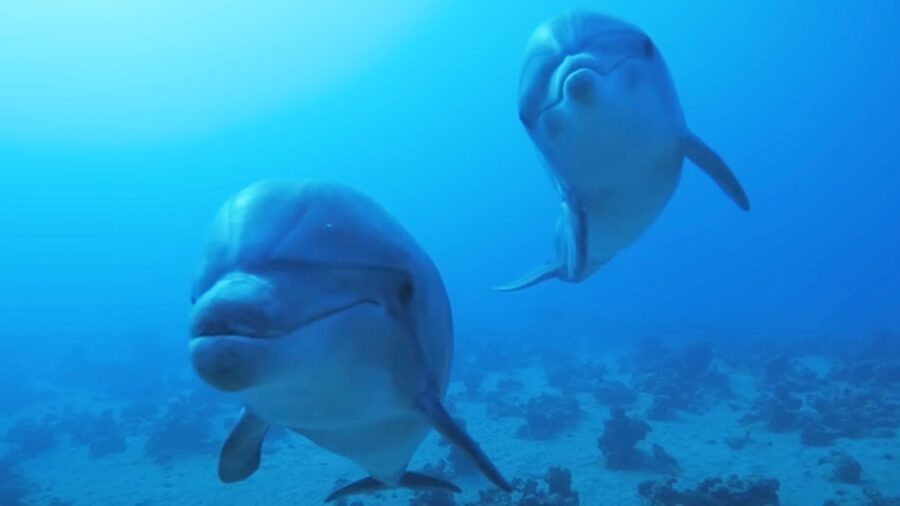
Scientists have recently discovered a giant river dolphin in Peru’s Amazonian rivers; the uncovered skull belongs to a member of a species that migrated from the ocean to Amazonian rivers some 16 million years ago. However, what really makes this interesting is the size of the dolphin and its connection to its relatives—who can be found halfway around the globe.
An Ancient Species
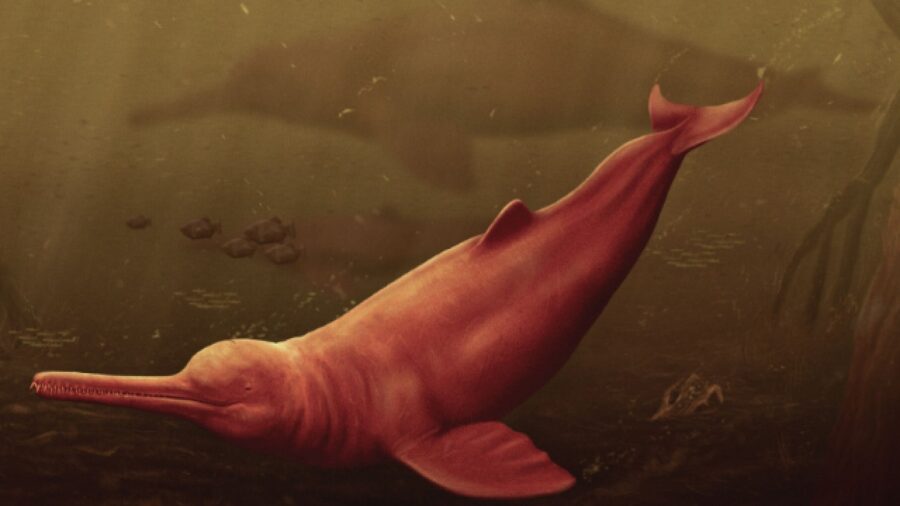
The new species—or rather a new discovery of an ancient species—called Pebanista lacuna was discovered in 2018 near the Napo River in Loreto, Peru. The discovery was made when the lead study author, Aldo Benites-Palomino, stopped to examine some strange-looking rocky formations when one of his colleagues, the study co-author, pointed out a formation that looked like a skull. As it turns out, the 27-inch-long skull, though incomplete, actually belonged to an ancient giant dolphin that lived in the Amazonian River.
Apex Predator
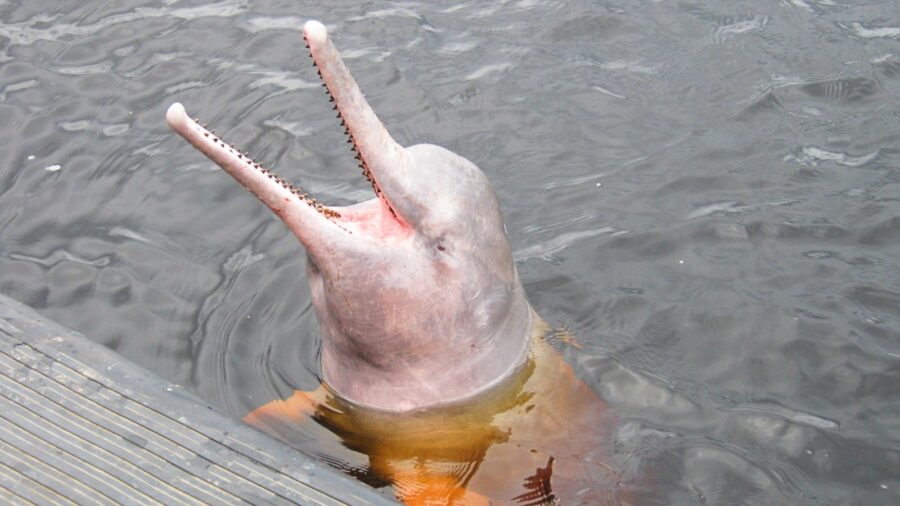
The initial belief was that the scientists had stumbled upon an ancient relative of the modern Amazonian river dolphins, but the subsequent analysis of the skull told a different tale. The size and shape of the eye socket closely resemble that of the South Asian River dolphins, while its length indicates that the dolphin’s body probably measured at least 11 feet long, making it about 20 to 25 percent bigger than the biggest known freshwater dolphin. Considering that the skull is incomplete, the ancient giant dolphin may have been even larger than that.
It’s now believed that the giant dolphin was one of the first species of dolphins to test the waters in the Amazonian rivers and lakes, which were nutrient-rich and teeming with life. Though the Amazonian freshwater environment housed other predators, such as crocodilians, they, along with turtles, fish, and mammals, weren’t really a match for the newly arriving dolphins, whose predatory nature positioned them as apex predators in these environments.
Freshwater Dolphins
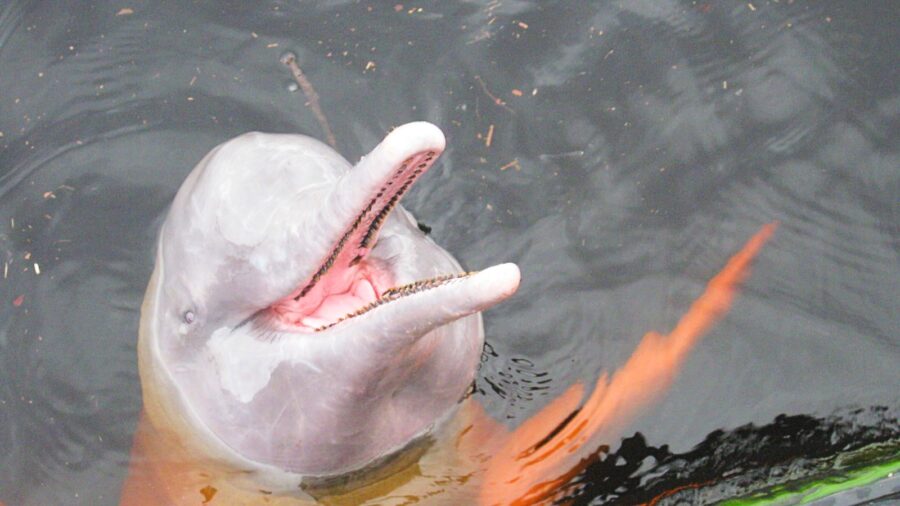
This lack of predators in its new environment could also explain how the ancient giant dolphin became so giant in the first place. However, even the greatest predators fall prey to environmental changes, such as drought, which most likely drove the giant dolphin to extinction. With the loss of the apex predator, the freshwater environment was opened up to the ancestors of modern South American river dolphins.
This is rather remarkable because the South American river dolphins actually belong to a completely different group of toothed whales. The discovery of the giant dolphin ancestor in the Amazon also provides insight into the evolutionary history of freshwater dolphins, especially since they’re really rare in fossil records. That’s partially because the strong water currents typically prevent fossils from preserving that well.
Difference Between Freshwater And Ocean Dolphins
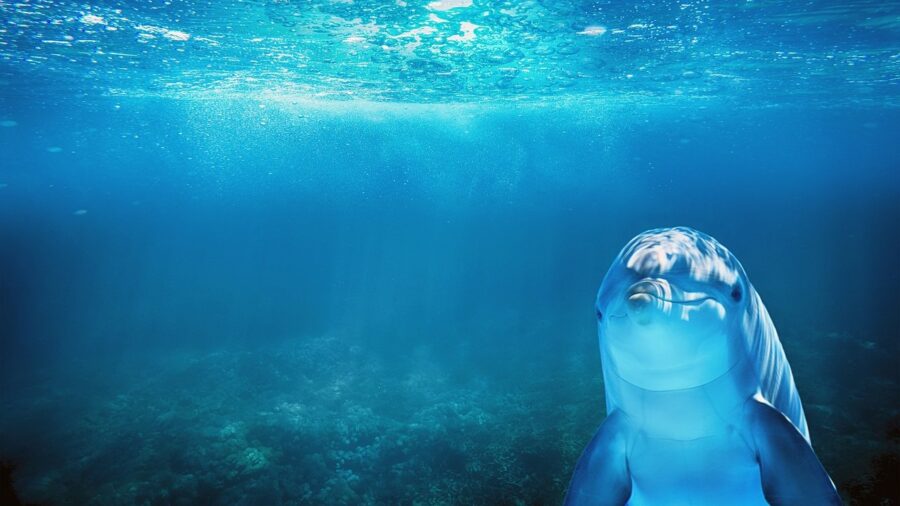
Unlike their marine relatives with stubbier snouts, modern freshwater dolphins are known for their highly elongated noses, like the Amazon River dolphin—Inia genus, also known as the pink river dolphin—and Platanista genus, also known as the South Asian river dolphin. These two groups also include several species and subspecies of river dolphins. There’s also a third genus, the Lipotes vexillifer, or China’s Yangtze river dolphin, but that particular species hasn’t been seen in the wild in the last 40 years, leading experts to believe it might be extinct.
Source: Science Advances












